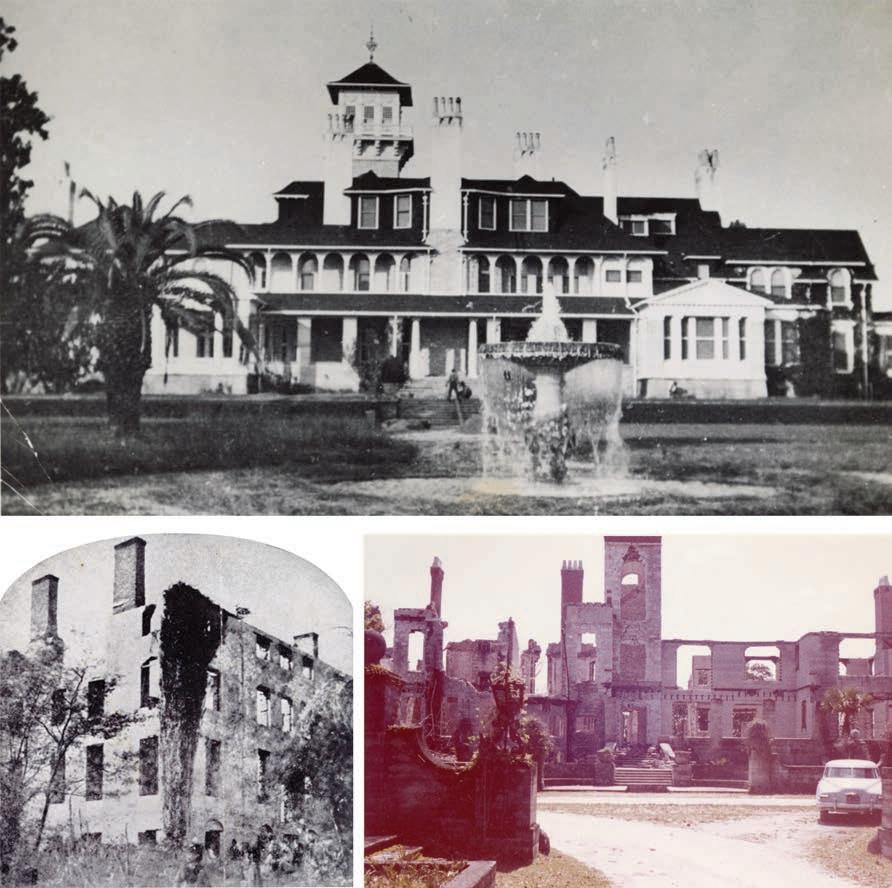
2 minute read
SSI Archives
Celebrating a Cumberland Island Treasure: Dungeness
This year Cumberland Island National Seashore celebrates its Golden Anniversary. Over the past five decades, visitors have enjoyed the natural beauty and cultural assets of Georgia’s southernmost barrier island. A favorite area for visitors is Dungeness, located on the southern end of the island, where two residences built by nationally prominent families once stood.
General Nathanael Greene, hero of the American Revolution, acquired property on Cumberland Island a few years before his death in 1786. Around 1799, his widow Catharine and her second husband Phineas Miller moved to Cumberland, after putting their property near Savannah up for sale. In the early 1800s, the Millers built an imposing four-story residence with exterior walls made of tabby. Known as Dungeness House, the building became a point of reference for coastal navigators because of its extraordinary height.
The Greene-Miller house burned in 1866, and the property was later acquired by Thomas M. Carnegie, brother of steel industrialist Andrew Carnegie. In 1884-1885, he and his wife Lucy built a spacious Queen Anne-style home as a winter retreat. After Thomas died in 1886, Lucy continued to make additions to the house, eventually more than doubling its footprint. The Carnegie children also built homes on the island: Plum Orchard, The Cottage, Greyfield, and Stafford. From November to May each year, the Carnegie family and friends enjoyed the natural beauty of the island and the recreational facilities built by Lucy, including an indoor pool, a squash court, and stables. Lucy Carnegie died in 1916, and in time the mansion was closed due to the cost of upkeep. It burned in 1959, echoing the fate of the original structure. The impressive ruins are a reminder of the grandeur of bygone days.
Featured this month from the Coastal Georgia Historical Society archives are pictures of the Greene-Miller house ruins in the 1880s and the Carnegie mansion in the 20th century. Also shown is a 1960 color photograph of the Dungeness ruins.
Coastal Georgia Historical Society presents this article and images from our archives as part of our mission “to connect people to Coastal Georgia’s dynamic history.” The Society operates the iconic St. Simons Lighthouse Museum and the World War II Home Front Museum, housed in the Historic Coast Guard Station at East Beach. To learn more about the Society, its museums, diverse programs, and membership, please visit coastalgeorgiahistory.org.

SHOPS AT SEA ISLAND 600 SEA ISLAND RD., #16 ST. SIMONS ISLAND, GA 31522 912.634.9060 JOSEPHJEWELERS.COM











